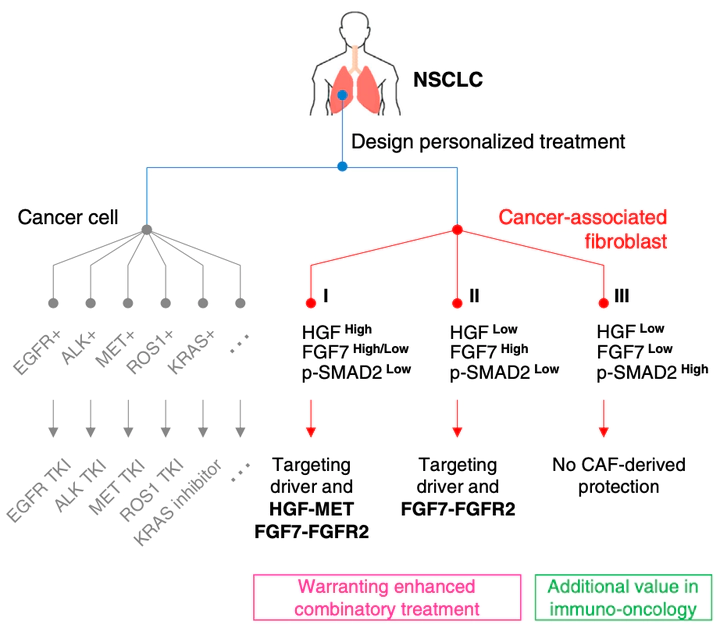
Abstract
Cancer-associated fibroblasts (CAFs) are highly heterogeneous. With the lack of a comprehensive understanding of CAFs' functional distinctions, it remains unclear how cancer treatments could be personalized based on CAFs in a patient’s tumor. We have established a living biobank of CAFs derived from biopsies of patients' non-small lung cancer (NSCLC) that encompasses a broad molecular spectrum of CAFs in clinical NSCLC. By functionally interrogating CAF heterogeneity using the same therapeutics received by patients, we identify three functional subtypes (1) robustly protective of cancers and highly expressing HGF and FGF7; (2) moderately protective of cancers and highly expressing FGF7; and (3) those providing minimal protection. These functional differences among CAFs are governed by their intrinsic TGF-β signaling, which suppresses HGF and FGF7 expression. This CAF functional classification correlates with patients' clinical response to targeted therapies and also associates with the tumor immune microenvironment, therefore providing an avenue to guide personalized treatment.